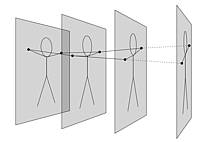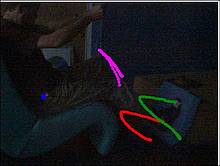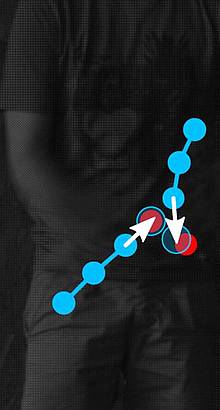Ein Werkzeug zur 3D Bewegungsanalyse
Vorbemerkung
Das Bewegungsanalysesystem Locomosy (A LOw-COst and MObile SYstem for marker based motion analysis) wurde von Immanuel Weber im Rahmen seiner Masterarbeit vom Konzept bis zum Prototypen unter der Anleitung von Prof. Kohl-Bareis im Labor für Biomedizinische Optik entwickelt. Das fertige System ist dann mit seinem Entwickler in das Biomechaniklabor umgezogen und hat dort in zahlreichen Anwendungen (z.B. Bremsprojekt Continental, Balance und virtuelle Realität) seine Flexibilität und Praxistauglichkeit unter Beweis gestellt.
Introduction
Optical marker tracking systems are a widely-used tool for motion analysis. Even though markerless tracking systems are currently entering the market, marker based systems will still be used due to their ability to measure precise ana-tomical body positions with high spatial and time resolution. Common disadvantages of such systems are the high tech-nical complexity accompanied by high acquisition and maintenance costs, the time consuming marker setup and the limited flexibility. To circumvent these drawbacks a flexible low-cost system has been developed in order to meet the requirement of many applications in biomechanics. The presented system offers the combination of flexibility and user-friendliness using off-the-shelve camera and computer technology thus enabling a high throughput of subjects at low costs.
Measurement System
LoCoMoSy enables 2D and 3D motion analysis with adequate measurement accuracy. The system is based on two color cameras (PIKE F032C, Allied Vision Technologies, Germany) with a resolution of 640 x 480 pixels and a stan-dard pc (CPU: Core2Quad 2.4 GHz, Intel, USA). LEDs in the visible range of light are used as markers. The software was developed with LabVIEW 2009 (National Instruments, USA) employing tools of parallel programming in order to make use of all four CPU cores. The three color planes of the cameras are processed separately to help solving the cor-respondence problem. The software is capable of doing real-time analysis and to display and recording of 2D/3D-coordinates of any number of markers.
Results & Conclusion
The system was used for gait analysis on a treadmill, where the motion of the left leg was tracked at different speeds. Real-time analysis with a time resolution of 5 ms and a spatial resolution of 5 mm in the main plane of 2 x 1.5 m at a distance of 3 m was achieved. The application was used to visualize and analyze gait profiles of different subjects.
The results show that the time and spatial resolution meet the requirements for gait analysis. They are limited by the measurement frequency of the cameras and the cameras sensor resolution, and therefore limit the available working area. For locally restricted, cyclic and occlusion-free motions the use of two cameras is not a limiting factor. Hence the system is a simple, flexible and reasonable option for applications of motion analysis in the field of biomechanics.










